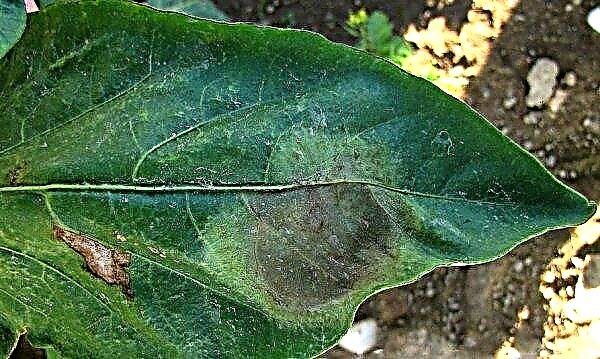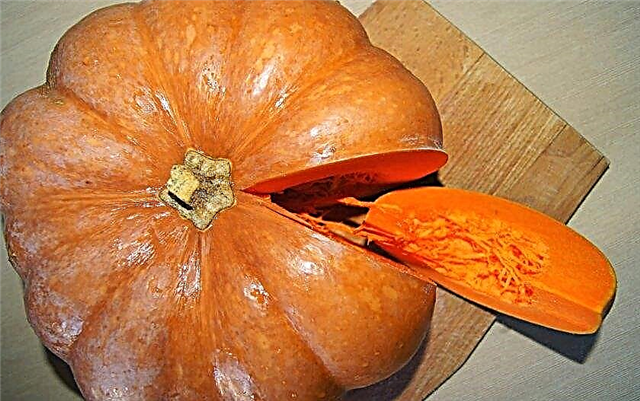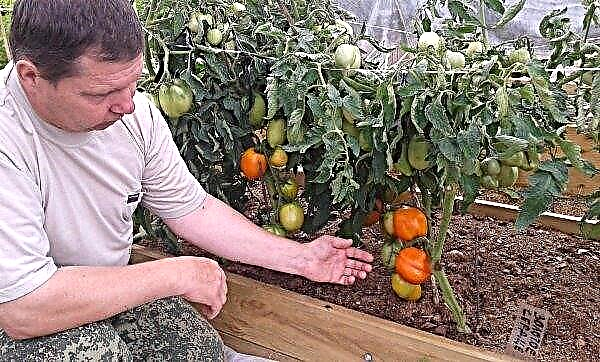Fans of exotic plants will be interested in the extravagant pachypodium, which, on the one hand, resembles a palm tree, and on the other - a cactus, as it has thorns on its trunk. Features of care and reproduction will be considered in this article.
Botanical description of the plant
Pachypodium belongs to the kutra family, since it is a succulent. This plant stands out among the rest with its powerful, thickened trunk.The trunk volume is distinguished depending on the types, among which it is customary to distinguish 3 groups:
- Dwarf ones are those with a short trunk. The plant does not grow up to 10 cm, the width, as a rule, exceeds the height.

- Shrubs - a barrel shaped like a bottle. The height of the plant in the natural environment reaches 3-4 meters; when grown in rooms and offices, the height of the flower is much less.

- Cactus-like trees - in the natural environment grow up to 5 meters, are small trees. They have a thick barrel that resembles a cigar in shape; it can be with branches or without them.

The most famous type of this plant is the pachypodium Lamera, popularly known as the Madagascar palm. This plant is native to Madagascar, it grows on rocks, its height in the natural environment can reach 3–8 meters, at home - 1–1.8 m. The trunk grows lignified, covered with gray husk, has three spines on each spiral husk. The top of the pachypodium is covered with dark green foliage.
Did you know? Pachypodium is translated from Greek as «fat leg».
The leaves are lanceolate in shape, slightly elongated. The leaf length varies from 13 to 30 cm, and the width is 4–9 cm, on the petiole 3-4 cm. Three spines are located above each leaf. The Madagascar palm tree blooms at maturity, when its growth reaches 10 cm. The diameter of the flower is 10–11 cm, the color is cream with a touch of pink, in shape resembles an asterisk.
| Root system | strong |
| Stem | large, bottled |
| Leaf shape | lanceolate |
| Leaf color | dark green |
| Flower shape | umbrella |
| Flower color | cream with a touch of pink |
| Fruit shape | oval |
| Fruit color | green |
| The taste of fruit | not edible |
House growing conditions
Growing a Madagascar palm tree does not require much effort, it is worth remembering only that this plant is poisonous and causes irritation of the skin. Following the rules of growing pachypodium, you can enjoy this plant for 15 years.
Lighting
Pachypodium Lamera requires a lot of light, in insufficient light the plant can lose its natural shape, arching the trunk to get the required amount of sunlight. Place the plant in the southern part of the room, where there will be a lot of sunshine.
Ventilation
On hot days, especially in summer, the Madagascar palm tree should be aired. It is necessary to take out the cactus to the balcony or ventilate the room where the flower is contained.
Temperature
It is very important to observe the temperature at which the pachypodium Lamer should be. In summer, the temperature should be + 25 ... + 30 ° C, in winter +16 ° C will be enough.
Air humidity
Humidity does not play a special role for growing the Madagascar palm, since the plant contains all the moisture in its trunk, which is why it is not afraid of dry air. With moist air, watering decreases, which also in no way affects the development of the plant.
Important! Water for irrigation should be infused, the temperature should be +16 ° C.
Home Care
Pachypodium Lamera does not require special care. As with all varieties of cacti, they require a certain irrigation regime, fertilizer, as well as a timely transplant.
Watering
From spring to the end of summer, the flower must be watered abundantly. Watering is carried out taking into account the dried soil in the pot, the thickness of which should be 1 cm. In winter, it is necessary to reduce watering, but if at this time of the year the flower dropped its leaves, watering should be stopped for 35–40 days. Further watering is carried out in the presence of new leaves in the plant.
Fertilizer application
In the spring and autumn, fertilize plants with a frequency of once a month. For feeding, liquid fertilizers are used for cacti, which are diluted with water to reduce the nitrogen concentrate, harmful to the root system of the pachypodium.
Pruning
Sooner or later, the pachypodium will have to be cut, as the plant will grow up. First of all, pruning is necessary in order to monitor the growth of the flower and in extreme cases to restrain it, for this you need to carefully cut the top of the pachypodium.
Important! The soil for planting and transplanting should be decontaminated to avoid decay of the root system.
Trimming occurs as follows:
- A disinfected blade cuts off the stem at a selected height.
- Slices are processed with sulfur or coal powder.
- The flower is planted in a room with dry air and moderate lighting. Watering for some time stops before the formation of new sprouts.
- The cut off top is placed in a mixture of sand and peat for rooting.

Transfer
This plant does not require frequent transplantation, as it has brittle roots. Since it grows slowly, it is worth performing the transplant process 2-3 times a year. For transplanting, the soil for cacti is suitable, which can be purchased in specialized stores. Young plants are transplanted every year by transshipment. Since they do not have a fully formed root system, transplantation must be carried out very carefully. For planting, large pots are used with holes in the bottom, so that excess water is on the pallet. Adult plants are transplanted once every 5-6 years.
Transplantation is carried out in early spring. At the time of transplant, the pot is filled by a third with drainage from broken bricks, pebbles or soil, which is used for the aquarium. Soil before application is processed in the oven to disinfect, and is treated with a weak solution of potassium permanganate. Since the plant is poisonous, it is necessary to protect your hands from damage with tight gloves. The trunk of the pachypodium should be wrapped in a dense fabric.
When transplanting, the roots do not separate from the soil, the plant is planted in a new pot with a lump of earth. This plant does not like to be disturbed, rearranged from place to place. With proper care, the plant quickly adapts after transplantation. After planting the flower in a new pot, he needs to rest, the plant should not be touched during this period. In the first month after planting, watering is not worth it; you can use "Epin" for recovery.
Video: Pachypodium Lamera transplant
Breeding
Reproduction of the pachypodium Lamer is carried out using cuttings and seeds. Both of these methods are not very effective: in the first case, the plant is poorly rooted, in the second - it ripens slowly.
Cuttings
Propagation by cuttings is carried out in the spring, before the start of active growth. The process occurs along with circumcision. Cropped cuttings are placed in a mixture of sand and peat for rooting.
Rooting takes place in the following order:
- Shoots, the length of which should be 15 cm, are cut with a disinfected blade. After trimming, all slices are immediately treated with carbon powder.
- The soil is being prepared. Sand is placed in the oven for disinfection, then mixed with peat, slightly moistened.
- It is placed in the prepared soil. It is not necessary to cover with a film.
- It is transported to a warm, well-lit room.
 For quick rooting, cuttings are treated with a root stimulant. At the rooting stage, watering abundantly is not necessary, as this can lead to decay of the roots.
For quick rooting, cuttings are treated with a root stimulant. At the rooting stage, watering abundantly is not necessary, as this can lead to decay of the roots.Seeds
To propagate the pachypodium using seeds, it is necessary to initially purchase seeds, since it is unrealistic to get them at home. When choosing seeds, you need to pay attention to the date of packing, as fresh seeds will germinate faster, and old ones can germinate in a month or not rise at all. In order to properly sow seeds, you need to know the main preparatory processes.
The main sowing processes:
- Soil preparation. It is necessary to mix sand with vermiculite in proportion.
- A low capacity is filled with the prepared mixture, it must be leveled and slightly moistened.
- Stack the seeds, the distance between them should be 4 cm. Cover with the rest of the mixture from above, the thickness of the cover should be 3 cm.
- Cover with cling film, make holes so that condensation does not accumulate.
- Transfer the sowing tank to a warm, well-lit place with a temperature of + 25 ... + 30 ° C. Watering is carried out using a spray gun, they do not allow complete drying of the soil, it is also necessary to ventilate the tank 4 times a day.
- As soon as seedlings appear, the film is removed, watering is reduced.
Video: propagation of pachypodium lamer by seeds
Growing difficulties
The main difficulty in growing pachypodium are diseases of the root system, which lead to its decay. The development of these diseases occurs with improper care, as well as when transplanting and planting in non-disinfected soil. Diseases can be treated with care correction.
Despite the rot of the root system, there are other difficulties when growing:
- foliage drying - irrigation regimen is violated, pests attacked, there is a root disease. To eliminate the problem, it is necessary to regulate watering, pests are controlled with insectoacaricides;
- stunting - overheating of the plant. It is necessary to adjust the temperature regime in accordance with the season;
- barrel deformation - Incorrect lighting, broken root system. It is necessary to adjust the lighting, transplant the plant.
The following pests can attack the pachypodium:
Omens and superstition
The following signs and popular beliefs are associated with the Madagascar palm tree:
- palm trees accepted as a gift will bring grief to the family, in order to avoid unhappiness in the house, you need to buy a flower with a coin;
- Madagascar palm converts negative energy into positive;
- when the pachypodium begins to bloom, the house is filled with love and good;
- the flower will protect its hosts from unfriendly guests, they will feel tired;
- in the house in which this flower is located, loyalty will remain, all members of the family will come closer;
- since the pachypodium belongs to the cactus family, it is impossible to keep it in the bedroom, because the flower can adversely affect human health;
- cacti and flowers of the cactus family contribute to the emergence of alcoholism in the family, and unmarried girls are doomed to the crown of celibacy;
- single women who collect different types of succulents can find a man and marry well.
 To believe these signs and superstitions is everyone's personal business. But despite this, there are many couples who live happily growing pachypodium. Pachypodium is a fairly popular, albeit unsafe flower in everyday life, which requires sufficient care, as well as precautions. Knowing the signs and superstitions and believing in them, it is possible to prevent the appearance of problems in the family.
To believe these signs and superstitions is everyone's personal business. But despite this, there are many couples who live happily growing pachypodium. Pachypodium is a fairly popular, albeit unsafe flower in everyday life, which requires sufficient care, as well as precautions. Knowing the signs and superstitions and believing in them, it is possible to prevent the appearance of problems in the family.















